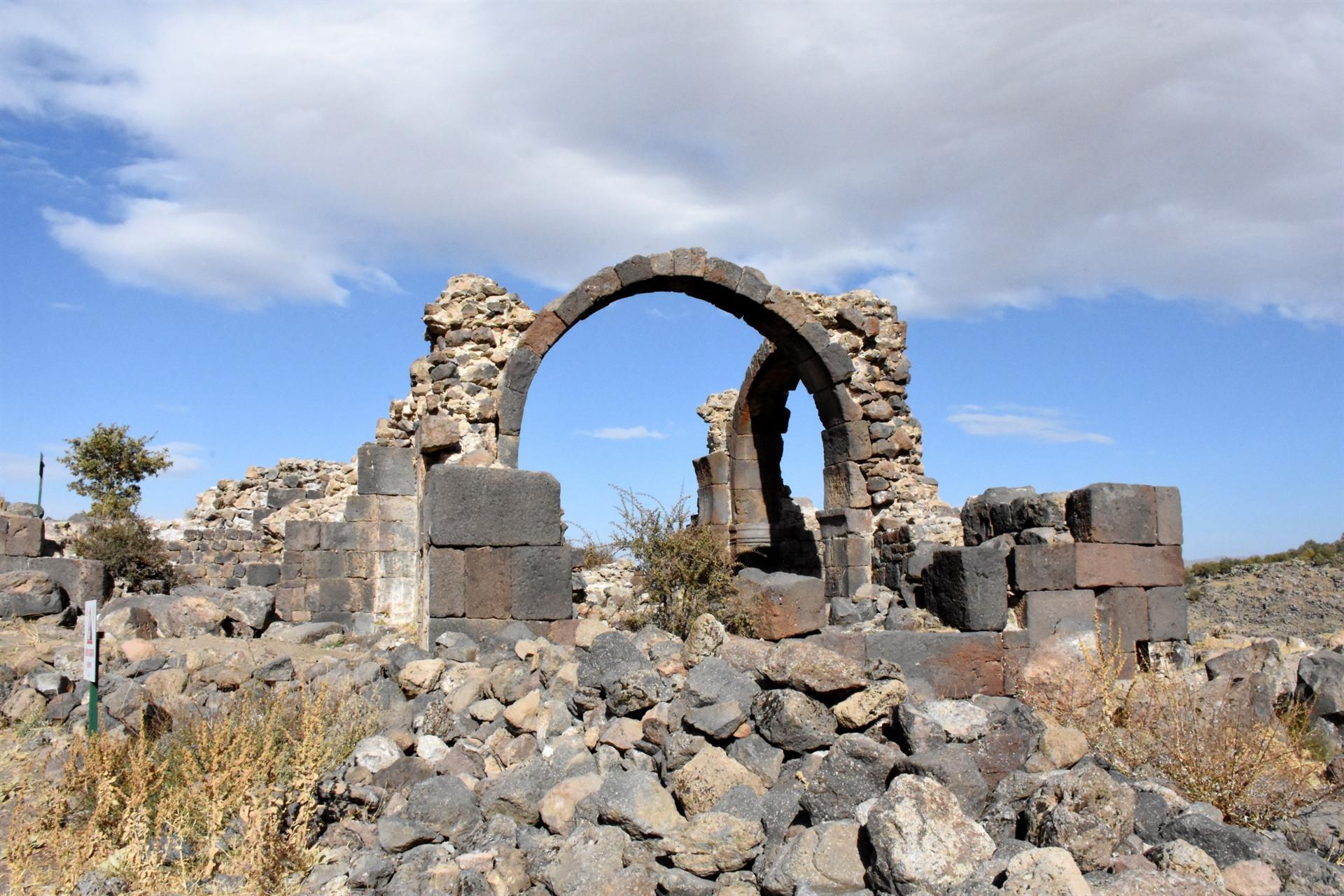
With its history dating back to the Hellenistic period, the ancient city of Mokissos, also known as “Nora,” which is compared to the ancient city of Ephesus in the region, is waiting to be revived again.
Founded on the skirts of Hasan Mountain in the Helvadere district in the central Anatolian province of Aksaray, the ancient city takes its visitors to the depths of history with its monumental Roman tombs, masonry churches from the fourth to the seventh century, as well as its unique natural beauties. One of the largest ancient cities of the Cappadocia region and well preserved until today, Mokissos consists of residences built with natural basalt blocks, stone monumental tombs, churches and cisterns.
In Nora, which started to be known thanks to the travel memories of western travelers in the 19th century and the research reports of scientists at the beginning of the 20th century, studies have started again after 30 years. In the ancient city, where research, mapping and architectural documentation studies have been completed, excavations will begin in May or June 2021.
Besim Tolga Uyar, associate professor at Nevşehir Hacı Bektaş Veli University (NEVÜ), who is the scientific advisor of the project, said the history of Nora could be traced back to the Hellenistic period, according to state-run Anadolu Agency.
Stating that the region was examined under the direction of a German scientist in the 1990s, Uyar said: “The pagan tombs, which are the oldest finds, dates back between the first and the second century A.D. Afterward, as of the fifth century, a very large city was built on these pagan tombs especially between the sixth and seventh centuries.”
Noting that the establishment of this city is related to the political relations of the period, Uyar said: “Researchers before us have identified 1,000 civilian residences here. These structures give us an idea about the population of the city at that time.”
“Apart from these structures, we have 32 well-preserved churches. Arched Church is the best of these. We have cistern structures. There are streets and passages where all these structures are connected to each other,” he added.
Noting that it is surprising that such an important place in the Cappadocia region has remained idle until today, Uyar said, “It has a large area and very impressive architecture and is in a great location as a natural protected area.”
Uyar stated that during the excavations, they would first investigate how old the history of the city is in trying to find the exact date.
“Nora Ancient City can become the ancient city of Ephesus in Central Anatolia. Of course, it has its unique structures in terms of scale and architecture. Our ancient city will tell many important things about Aksaray,” he said.
Noting that they conducted a one-and-a-half-month study with the permission of the Culture and Tourism Ministry, Uyar said, “We made a map of the archaeological sites and carried out landscaping works with the Provincial Directorate of Culture and Aksaray Museum Directorate teams.”
He also said that visitors who come here would now be able to visit important parts of the city thanks to the direction signs and the promenade from the entrance to the exit of the site.
“We are 11 kilometers from Ihlara Valley, which is visited by 500,000 people annually. In this sense, it is necessary to consider this place as a whole. If 10-15 percent of the tourists visiting Ihlara come here, it would make a great contribution,” Uyar added.